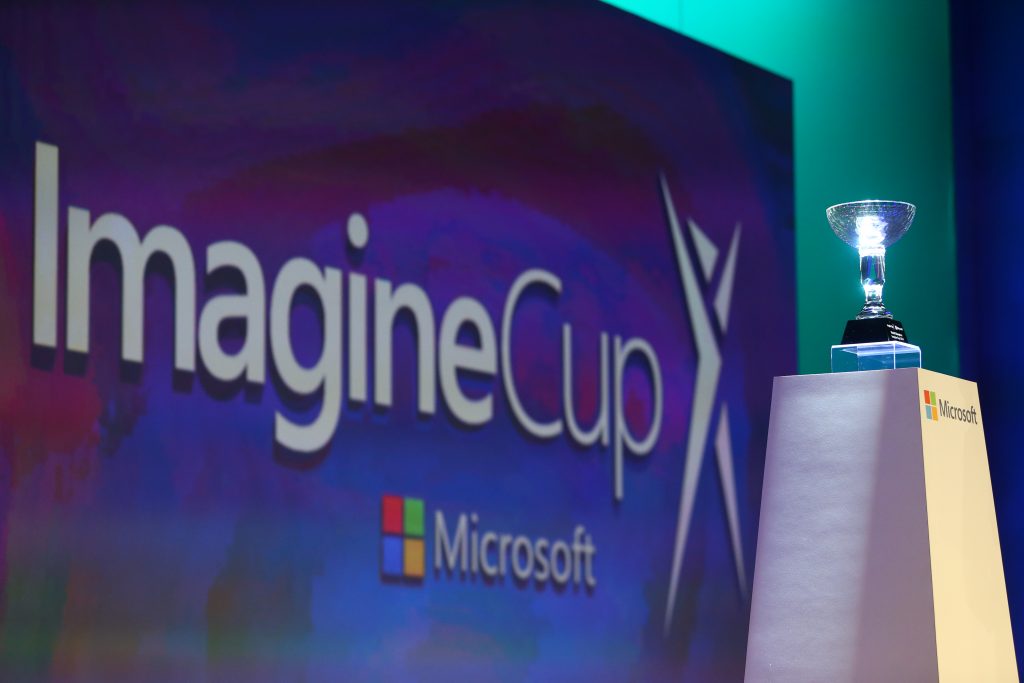
U.S. Imagine Cup finalists bringing bright ideas to San Francisco
It all began as a way to avoid an awkward conversation. Drexel University student Ethan Keiser is an ace at computer science, and classmates would plead for his help. Tutoring takes time. It usually costs money. But how could he ask his buddies to pay him?
So the business-minded computer programmer, along with friends Robyn Freedman and Phuoc Phan, created the StudyTree app to make sure tutors get paid and students get the help they need fast — even on the eve of a brutal test. Explains Freedman: “There is no other platform now where you can instantly get a tutor.”
Keiser, Freeman and Phan are among 12 teams who won the chance to compete April 22-24 in Microsoft’s U.S. Imagine Cup National Finals in San Francisco. The annual global technology competition gives students a way to learn from Microsoft experts as they turn cool ideas into reality. You can sign up to watch the event live.
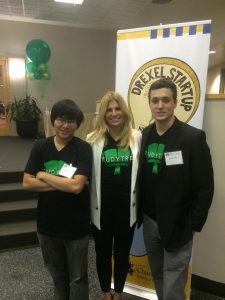
“We see the Imagine Cup as a platform for students to acquire new technical, business and design skills and apply them to a concrete project to add to their portfolio and differentiate themselves in the job market,” said Marion Boiteux, U.S. Imagine Cup lead. The idea is “to empower students to express their talent, innovate with technology and create great things.”
The U.S. finalists will pitch their projects, which focus on making driving safer, analyzing viruses and other inventive ideas, and answer questions from the judges, a panel of Silicon Valley technology leaders and entrepreneurs. One winning team in games, innovation and world citizenship categories will compete in the Imagine Cup World Semifinals in May. From there, one team will advance to the Imagine Cup World Finals in July, where the students will vie for the World Champion title and one of three $50,000 prizes.
The StudyTree team entered their app in the innovation category, made it through the first two rounds and are excited to head to the Bay Area event. Keiser said being chosen as a finalist validates their technology and Microsoft’s help — from mentoring to free cloud service for qualified startups — has been “a key part of our success.”
“It’s a great feeling knowing that a large corporation like Microsoft believes in us and is happy to provide these resources,” he said.
The team created a website that spells out the perks — “everybody wins” when tutors make money and flailing students get affordable help, it touts — and put together a polished video pitch.
They say using the app is much better than trying to hit the limited hours of a campus tutor center because it doesn’t find just any tutor — it gets someone who has already taken the same class from the same professor. Students can scope out tutors’ ratings and pay them through the app. Tutors get a notification when someone needs help and can respond if they’re up for the job; they can also use the messaging feature to hammer out the details.
The app is currently available only at Drexel, but Freedman — a self-described “finance nerd, marketing enthusiast and adventure seeker”— said they’ll start fundraising soon. They also plan to gear up for a launch in other colleges for the start of the new school year this fall.
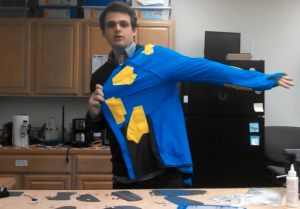
Morgan Sinko’s idea for NullSpace VR, another U.S. Imagine Cup finalist team, came as he watched his brother grow increasingly frustrated at trying to play a virtual reality game in their family home. The virtual balls were whizzing past him. He was failing miserably.
“I realized he was having trouble dealing with the game because he couldn’t tell what he was touching,” Sinko said. “There was a level of separation between him and his virtual avatar that he couldn’t get over.”
The answer devised by Sinko and his team — fellow University of Rochester students Lucian Copeland, Kian Jones and Jordan Brooks — is what looks like an ordinary blue jacket patched with strips of yellow tape and a pair of black gloves. They say this system changes the whole experience of virtual reality by allowing you to not just see and interact with objects, but to actually feel them.
“Say someone throws you a virtual baseball and you reach up to catch it, you feel it in your hand,” Sinko explained. “Not being able feel the things you’re interacting with causes confusion.”
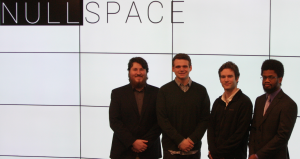
The team acknowledges they’re not the first to think of this idea, noting that others have made big strides with similar technology, but they believe they have “a great market niche” in being able to offer it at a low cost. They want their system to be something people outside high-tech industries or the military can use.
“We are attempting to revolutionize virtual reality through inexpensive touch feedback,” Sinko said.
The team has put their system to the test in two virtual scenarios: a boxing match and social setting in which people can interact and shake hands. Copeland said the technology holds many possibilities beyond gaming: Surgeons could operate on patients in different locations, or sculptors could “feel” slabs of virtual clay. The team has also been in touch with therapists at the Veteran’s Administration to discuss how it could enhance the immersion therapy that’s sometimes used to help soldiers who have post-traumatic stress disorder.
The four will get the chance to demonstrate their system at next week’s Imagine Cup competition and give their pitch to the judges and crowd, which Sinko calls “a little bit nerve-wracking.” But he feels ready. “We built this; we are the experts on it,” he said. “You’d be hard-pressed to find someone who knows more about it than us.”
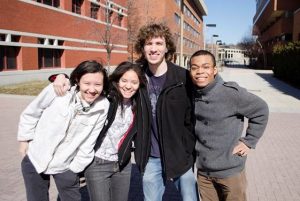
In a world with no shortage of dark, violent computer games, picture guiding a friendly-faced robot around a blocky maze. As upbeat music plays, you use other, equally perky robots — each with its own bright color — to help clear the path for your black-and-white hero to reach the finish, and then you’re on to the next level. Sounds easy, right?
Not so fast. It’s called HueBots, and it can get tricky. There are weird rules. The robots’ colors determine how they interact with the objects that are in your way; only red robots can open red doors, for example. Its creators call it “a simple yet cleverly challenging game” and note that there are no instructions.
“We’re teaching people how to play the game by having them play the game,” explains Tad Cordle, who developed the prototype in just 24 hours and used his musical abilities to compose the catchy music himself.
He and Michael Leung, Jasmine Martin and Erika Schumacher — all fellow members of a game developers’ club at the University of Maryland, Baltimore County — make up the Huebotics team and will show off their game to Imagine Cup judges.
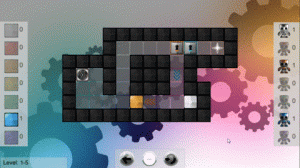
They say it stands out from legions of other games because it’s challenging without being frustrating and “isn’t too cutesy.” They’re now working on a way for users to design new levels and then upload their work, a feature that will let people play through other players’ newly created mazes.
“We didn’t expect to make history; we just wanted to give something new a try,” Leung said
They’ve gotten plenty of feedback through the downloadable demo on their website, including comments from friends. “A lot of people find it kind of addicting,” Cordle said. But it’s the broader reaction to their work that has caught them off guard.
Their university’s president, Freeman A. Hrabowski III, lauded the project as far more than a game in an article he wrote for CNBC.com, saying the students’ effort gives valuable clues “about how to improve education for students of all backgrounds” in ways that align with their interests.
“As the students vie for the honor of representing the U.S. internationally” in the Imagine Cup World Finals, he wrote, “they’re also showing us the future of teaching, learning and careers.”
It’s not too early to start planning for next year’s Imagine Cup; you can sign up to learn more and get notified when registration begins.
Lead photo: The Imagine Cup is on display at the 2014 World Finals in Seattle. Photo courtesy of Imagine Cup.














